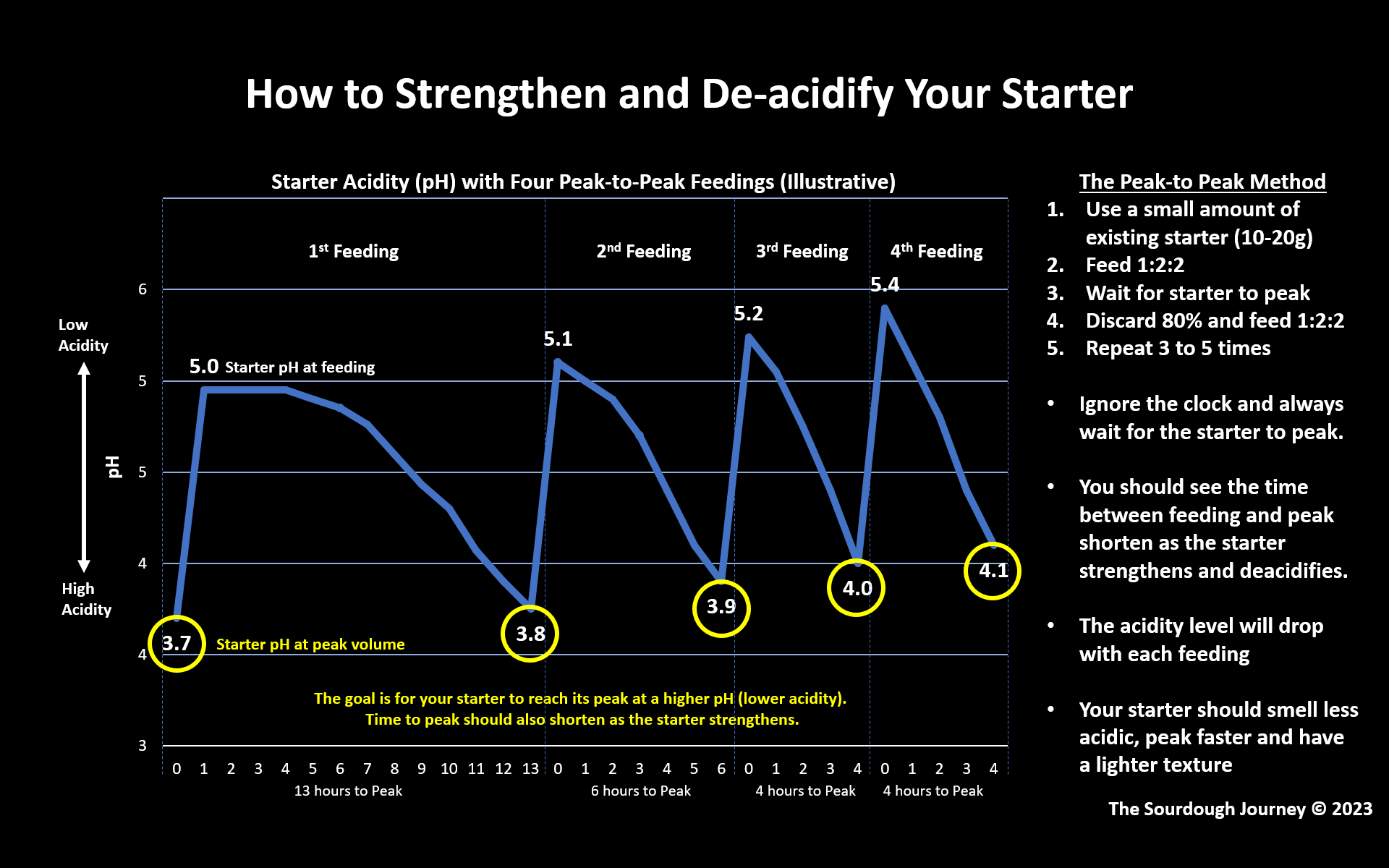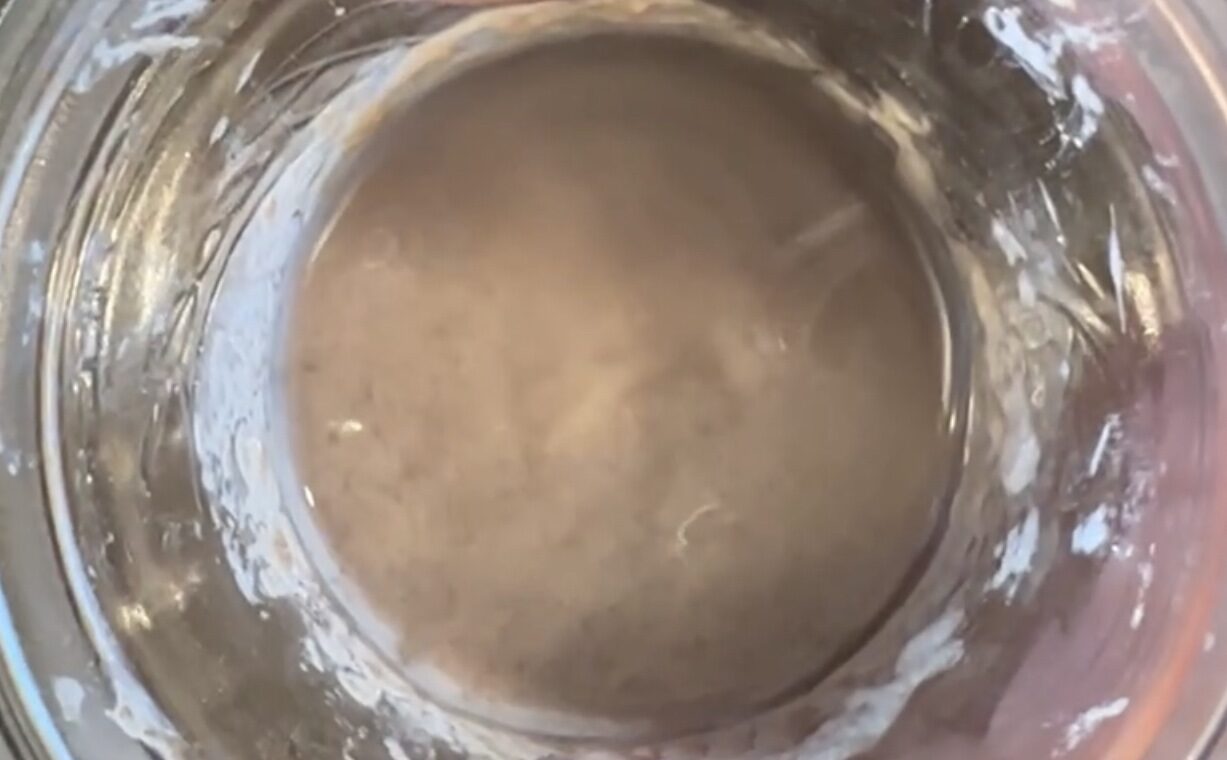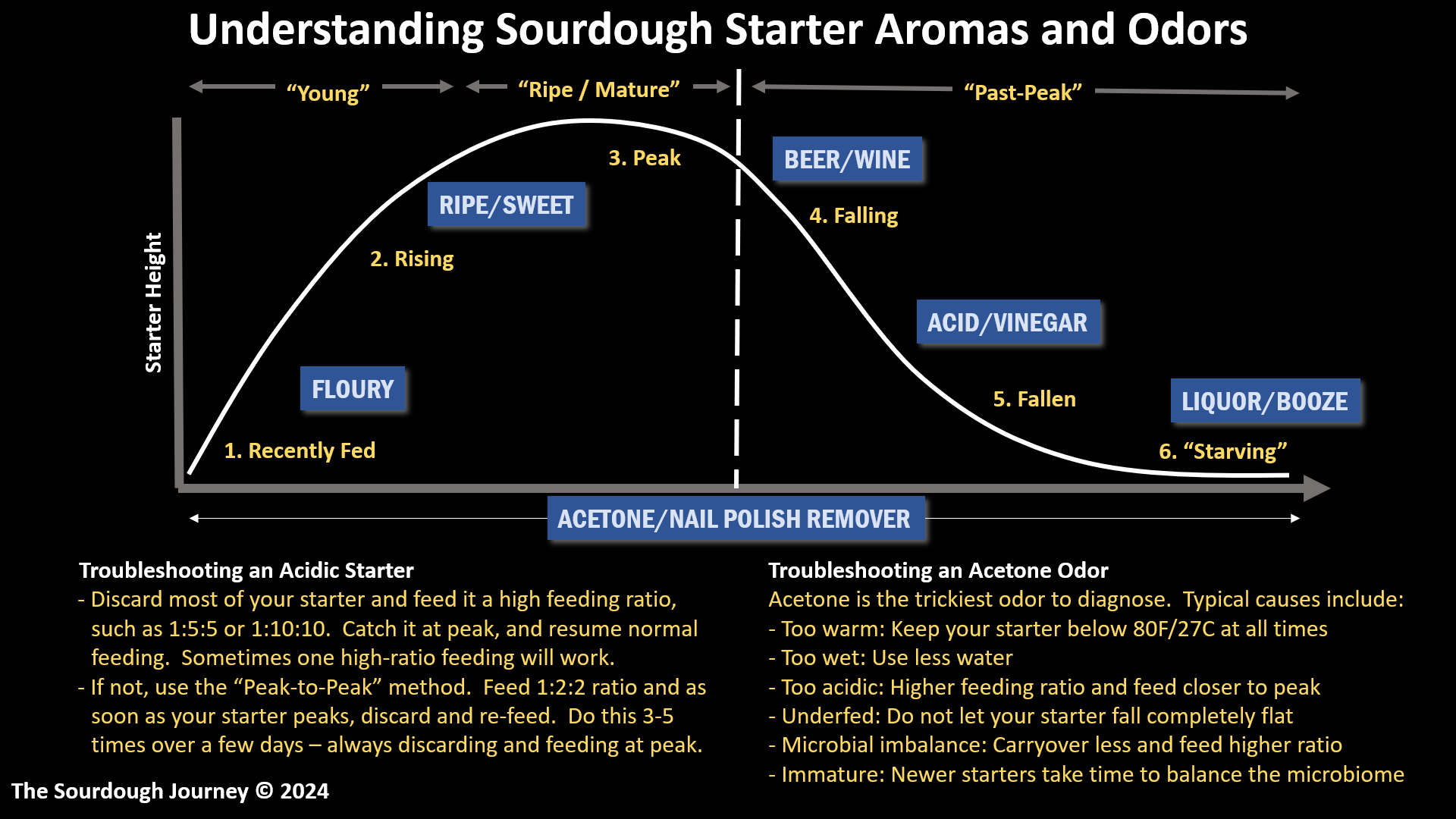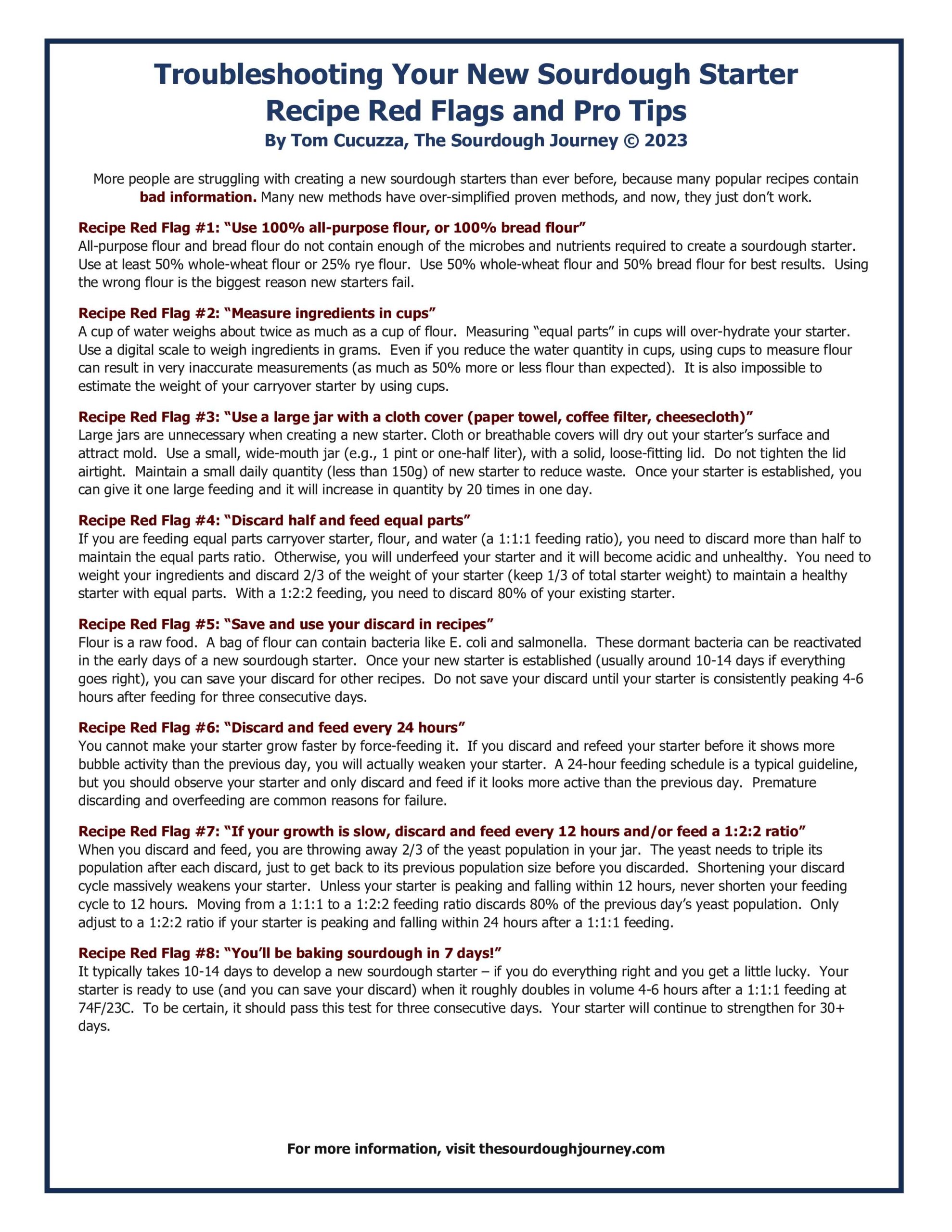Top 10 Troubleshooting Tips for New Sourdough Starters
By Tom Cucuzza, The Sourdough Journey © October 2023
1. Use the right ingredients:
· Use a 50/50 mix of whole wheat flour and bread flour. The balance can be all-purpose or bread flour. It is difficult to create a new starter with 100% all-purpose or bread flour. You can substitute 25% whole rye flour for the whole wheat.
· Use non-chlorinated water (e.g., filtered, bottled, de-chlorinated – but not distilled).
· Don’t add other ingredients. Pineapple juice, sugar, honey, raisin water and packaged yeast are unnecessary.
2. Weigh your ingredients in grams. Do not use cups. Feed equal parts flour and water by weight. Keep a small quantity (less than 150g), otherwise you are just creating a lot of waste. After the initial mix, discard 80% and use a 1:2:2 feeding ratio (e.g., 25g starter, 50g flour, 50g water).
3. Don’t save your discard for the first 10 days. After 10 days, a healthy starter will naturally repel foreign pathogens. It needs time to build up its “immunity.”
4. Understand the timeline. Creating a starter is mostly “watching and waiting”
· Days 1-3: Activate the Microbes: Unpredictable activity, weird odors, and often a “false rise” (a vigorous, one-time rise on day 1-3)
· Days 4-6: The Quiet Days: Slow bubble growth on the surface
· Days 7-10+: Slow Strengthening: Gradually increasing rising strength
5. Be Patient! Premature discarding and overfeeding will weaken your starter and elongate the process. Don’t discard and re-feed a weak starter before it shows increasing bubble activity or height from the previous feeding. If you don’t see more bubbles or a faster rise each day, skip a feeding, and give it more time. Death by starvation is nearly impossible. Overfeeding is the bigger problem.
6. It’s not hooch. If you see clear liquid in your starter, it is water separation. Stir it up. Hooch (alcohol) only occurs in a strong, mature starter.
7. Temperature matters. Keep it warm but not too warm (always under 85F/29C). Cooler temperatures will slow down the process, but it will still work. Be patient.
8. Doubling is overrated. Some starters double, some triple, some don’t double. Look for a fast rising time (peaking in height 4-6 hours after feeding) not the height of the rise.
9. It is difficult to kill a starter. Be on the lookout for mold in the first 10 days. Mold, heat (over 130F/54C) and bleach are the only things that can kill your starter.
10.Every starter is unique. Creating a starter is a biological process and every bag of flour produces a unique starter. All instructions are general guidelines.
When is it ready? – A new starter is ready for baking when it approximately doubles in volume in 4-8 hours after a 1:2:2 feeding at 74F/23C. Cooler starters will rise more slowly but can be just as strong.
Let nature do the work for you. If you combine whole-wheat flour and water in a jar, it would be uncommon for it to not turn into a sourdough starter. Be patient and stay out of the way.
Tom Cucuzza
Share:
Related Posts

Dough Temping for PERFECT Sourdough Fermentation
What is sourdough “dough temping,” and how does it work?

The Science of the Peak-to-Peak Method of Strengthening a Sourdough Starter
What is the Peak-to-Peak Method and how does it strengthen a weak sourdough starter?

How to Strengthen a Weak, Acidic Starter
Is your sourdough starter sluggish? How do you identify and fix a weak, acidic starter. This document is the companion guide to the popular video “How to Strengthen a Weak, Acidic Starter.”

My Sourdough Starter Smells Like Acetone
My sourdough starter smells like acetone?

Troubleshooting Your New Sourdough Starter: Recipe Red Flags and Pro Tips
What’s wrong with my new sourdough starter?
